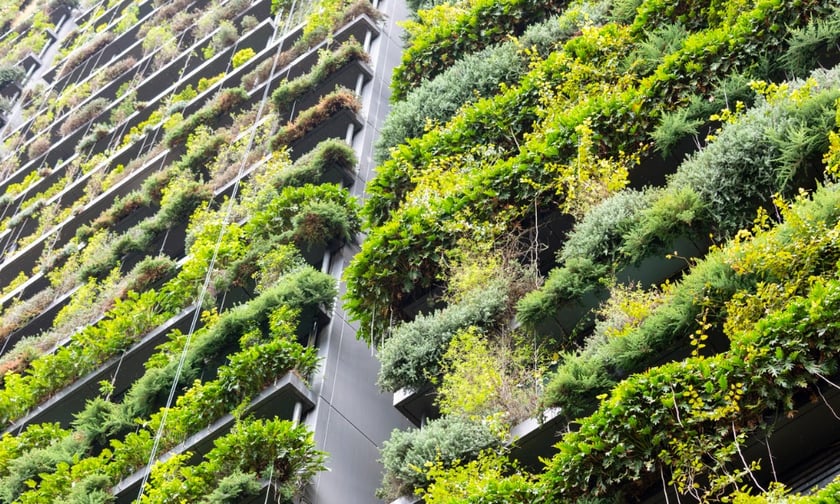

Green walls, which are also known as living walls or vertical gardens, serve as a way to boost biodiversity while reducing air pollution as well as promote the well-being of people within urban areas.
Despite their positive impact, insurance brokerage Lockton pointed out in a report that green walls have the capacity to influence the property risk considerations of buildings when it comes to the probability of fire, water, and wind damage. As such, the report highlighted ways of managing the risk of green and living walls.
According to a report by research scheme RISCAuthority, there are four types of green walls: wire trellis or net systems for climbers, troughs, fabric-based systems, and modular panel-based systems. Lockton said that as green walls can be installed in numerous ways, they still bear combustible elements, which can result in challenges for property insurance by increasing insurer loss estimates and impacting loss quality.
The report stated that notable challenges when it comes to green walls include the combustibility of the planted system, plastics or other materials within it, management of penetrations like windows and vents to prevent fire ingress and spread into the building and void areas, water and wind damage potential, and possible impact to the building and surrounding should a green wall dry out.
The new guidance released by the Fire Protection Association’s (FPA) RISCAuthority included a detailed questionnaire that gathers information about a building’s green walls along with detailed background information and guidance. It has a scoring matrix that can be utilised by authorities having jurisdiction (AHJ) like building control, insurers or fire authorities, which can also help other stakeholders understand the potential assessment approach by an AHJ.
The guidance also has a set of core principles and a methodology in order to gather more information and assess the characteristics of green walls, with topics including appropriate fire testing, clear record keeping, fire risk assessments, system information, emergency plans, maintenance, construction materials, design, and upkeep.
What do you think about this story? Share your thoughts in the comments below.
